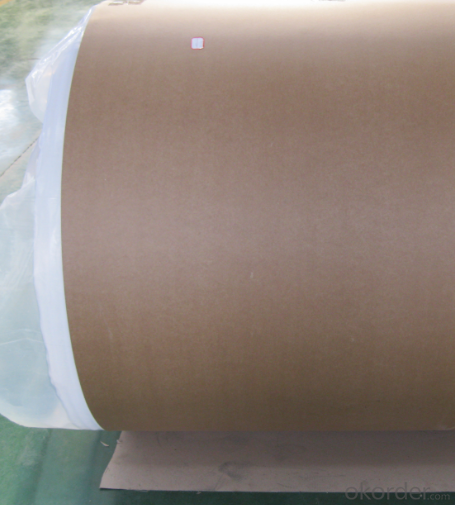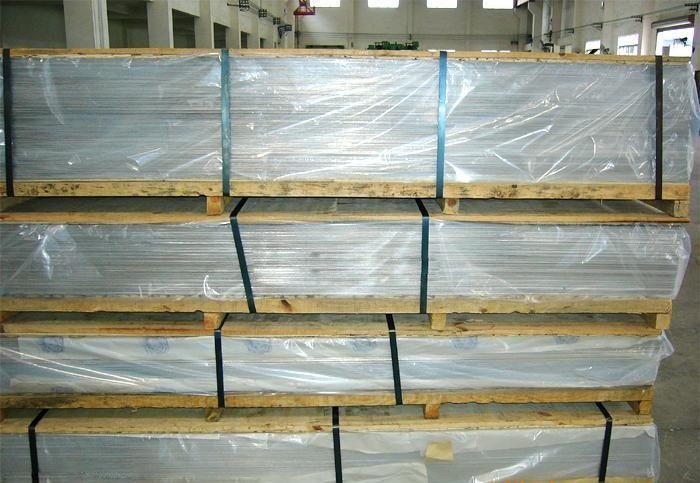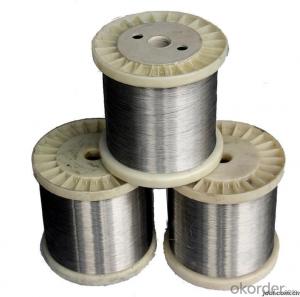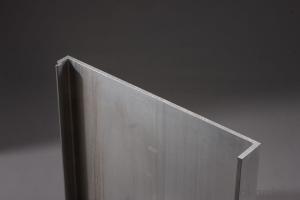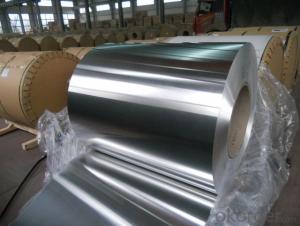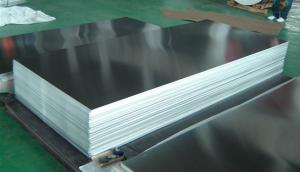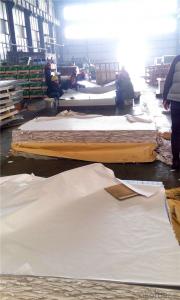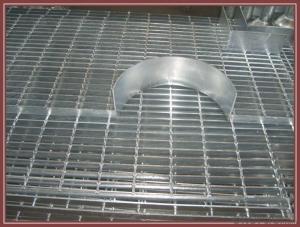1100-H18 Aluminium Sheet and Plate - Weight of Aluminum Roofing Sheets
- Loading Port:
- Shanghai
- Payment Terms:
- TT or LC
- Min Order Qty:
- 6 m.t
- Supply Capability:
- 3000 m.t/month
OKorder Service Pledge
OKorder Financial Service
You Might Also Like
1.Structure of Product Description
hot rolled aluminum sheet and those cold rolled aluminum sheet is widely used in the field of construction field and decoration field, etc.
There are many different grades, such as: 1000 series, 2000 series, 3000 series, 5000 series, 6000series, etc. The detailed grade are as follows: 1010, 1050,1060,1100, 2024, 3003, 3005, 3105, 5052,5754,5083,6061,6063,8011, etc.
The temper is include H14, H22, H24, H44,H112,H114,etc.
2. Main features of the product
a. Competitive price
b. Frist-Class Service.
3. Image.

4. Product detailed sizes:
1250mm*2500mm,1000mm*2000mm,1100mm*2200mm,1220mm*2440mm,1500mm*6000mm,
1500mm*3000mm, etc.
5. FAQ:
What is the quality standard?
What is the length range:
---It is from 2000mm to 6000mm, etc.
What is the export quantities?
----normally we can export around 9000 tons in one year.
how many tons did you export in each year ?
---normally it is around 8000 tons totaly in one year.
what is your mainly export countries ?
---normally it is middle-east countries, such as: UAE, ARAB EMPAIRES, USA, VIETNAM, INDONESIA,FIJI, SINGAPORE, ETC.
How often did client place one order yet ?
How often did you export in one year?
---Normally it is around 1 month.
which goodsis the best-selling now?
---normally it is aluminium color coated coil in the past one year, etc.

Aluminum sheet metal is aluminum species in a, it is refers to the use of plastic processing methods aluminum billets after rolling, extruding and drawing and forging method eventually made into a plate of aluminum products, in order to ensure the final performance of plate and on the finished product annealing, solid solution treatment, quenching, natural aging and artificial aging treatment.
Application of aluminium sheet metal:
7005 aluminum sheet metal extrusion material, often used to manufacture both to have high strength but also have high fracture toughness of the welding structure, such as transport vehicles of the truss, bar, container; large heat exchanger, and after welding can't were solid fusion processing components, for manufacturing sports equipment such as tennis and softball stick.
7039 aluminum sheet metal used in the cryogenic vessel, cryogenic equipment and storage tank, fire pressure equipment, military equipment, armor plate, missile equipment.
7049 aluminum sheet metal used in the same and forging static strength and 7079-T6 alloy requires high anti stress corrosion cracking strength of parts, such as aircraft and missile parts, landing gear hydraulic cylinder and the pressing member. The fatigue performance of the parts is roughly equal to that of the 7075-T6 alloy, while the toughness is slightly higher.
7050 aluminum sheet metal used in aircraft structural parts with plate, extrusion, free forging and die forging. The requirements for the manufacture of this kind of parts are: anti spalling corrosion, stress corrosion cracking, fracture toughness and fatigue resistance.
7072 aluminum sheet metal used in aluminum foil and extra thin strip.
7075 aluminum sheet metal used in 7075 aluminum plate for the manufacture of aircraft structure and futures high strength, high strength and corrosion resistance of high stress structure parts, mold manufacturing.
- Q: I want to use one aluminum bottle, rather than several plastic ones. And this may sound stupid, but will an aluminum water bottle be safe to put in the fridge?
- Just about anything is safe in the fridge. I put aluminum Coke cans in the fridge.
- Q: What are the different finishes available for aluminum sheets?
- There are several different finishes available for aluminum sheets, each with its own unique characteristics and benefits. Some of the most common finishes include: 1. Mill finish: This is the most basic finish for aluminum sheets, characterized by a smooth, shiny surface. It is typically achieved by passing the aluminum through a rolling mill, leaving it with a natural appearance. Mill finish is often preferred for industrial applications where aesthetics are not a primary concern. 2. Anodized finish: Anodizing is an electrochemical process that adds a layer of oxide to the surface of the aluminum sheet, providing enhanced durability and corrosion resistance. Anodized finishes can range from clear to various colors, and they can also be dyed to achieve specific hues. 3. Brushed finish: This finish is achieved by brushing the aluminum sheet with abrasive materials, creating a pattern of fine lines on the surface. Brushed finishes offer a distinctive, textured appearance and are commonly used in architectural and decorative applications. 4. Polished finish: Polishing aluminum sheets involves buffing the surface to a high shine, resulting in a mirror-like, reflective finish. This finish is often chosen for decorative purposes, such as in interior design, automotive detailing, or jewelry making. 5. Embossed finish: Embossing involves creating raised patterns or designs on the surface of the aluminum sheet, adding texture and visual interest. It can be achieved through various methods, such as roll embossing or stamping, and is commonly used for decorative purposes or to improve grip on certain applications. 6. Powder-coated finish: Powder coating is a process where a dry powder is applied to the aluminum sheet and then cured under heat, creating a tough, durable, and attractive finish. Powder-coated finishes come in a wide range of colors and provide excellent resistance to fading, chipping, and scratching. These are just a few examples of the different finishes available for aluminum sheets. The choice of finish will depend on the specific requirements of the application, such as aesthetics, durability, and functionality.
- Q: What is the coefficient of friction for aluminum sheets?
- The coefficient of friction for aluminum sheets can vary depending on the specific conditions, such as the surface it is in contact with and the presence of lubricants or contaminants. In general, the coefficient of friction for aluminum sheets is relatively low, ranging from 0.2 to 0.6. However, it is important to note that these values are approximate and can be influenced by various factors.
- Q: Can aluminum sheets be coated with protective films?
- Yes, aluminum sheets can be coated with protective films.
- Q: Are aluminum sheets suitable for signage and advertising?
- Yes, aluminum sheets are suitable for signage and advertising. They are durable, weather-resistant, and can be easily customized with graphics and text. Additionally, their sleek and professional appearance makes them an excellent choice for promotional materials, outdoor signs, and indoor displays.
- Q: Explain the pros and cons of utilizing aluminum sheets in the construction of car body panels.
- <p>Aluminum sheets offer several advantages for car body panels, such as reduced weight, which can improve fuel efficiency and handling. They also have high resistance to corrosion, enhancing the vehicle's durability. Additionally, aluminum is easier to recycle, contributing to environmental sustainability. However, there are downsides, including higher cost compared to steel, which can affect the vehicle's price. Aluminum is also less malleable, making it more challenging to repair after accidents, potentially leading to higher repair costs. Furthermore, aluminum's lower strength compared to steel can necessitate thicker panels to achieve the same structural integrity, which may offset some of the weight savings.</p>
- Q: Would you please tell me what putty to use on the aluminium board, what kind of putty, and the painting process?
- Applied atomic ash.Consider adding an interface agent, that is, applying an interfacial agent on the aluminum plate, and then applying a topcoat on the interface agent after drying.You can also consider adding primer or putty, and then spray paint.In summary, adhesion of the topcoat is reinforced with an agent.
- Q: Can aluminum sheets be used in construction?
- Construction can indeed utilize aluminum sheets. Aluminum, a versatile and lightweight material, possesses numerous advantageous properties for construction purposes. Its corrosion resistance allows for both indoor and outdoor applications. Moreover, aluminum sheets exhibit a high strength-to-weight ratio, granting them durability and strength while remaining relatively lightweight. This characteristic proves advantageous in construction projects where weight is a consideration. Furthermore, aluminum is non-toxic and highly recyclable, making it an environmentally conscious option. When combined with its aesthetic appeal and ease of fabrication, aluminum sheets become a favored choice for a variety of construction applications such as roofing, cladding, wall panels, window frames, and more.
- Q: How do you protect aluminum sheets from scratches?
- If you want to prevent scratches on aluminum sheets, there are several measures you can take: 1. Be cautious when handling: Always keep in mind that aluminum sheets are susceptible to scratches. Avoid dragging or sliding them on rough surfaces, as this can cause scratches. Instead, lift and place them gently on a clean and smooth surface. 2. Use protective coverings: Consider using plastic film or paper to cover aluminum sheets before storing or transporting them. These coverings act as a barrier and prevent direct contact with other surfaces, reducing the chances of scratches. Make sure the coverings are clean and free from dirt or debris. 3. Store in a safe environment: Store aluminum sheets in a clean and dry environment when they are not in use. Avoid storing them with abrasive materials or objects that may scratch them. You can also use dividers or separators to create individual compartments for each sheet, preventing them from rubbing against each other. 4. Clean with care: Use a soft cloth or sponge that is non-abrasive when cleaning aluminum sheets. Avoid using wire brushes or rough materials that can cause scratches. Additionally, use a mild detergent or aluminum cleaner specifically designed for this purpose. Rinse the sheets thoroughly and dry them completely to prevent any moisture-related damage. 5. Apply a protective coating: Another option to protect aluminum sheets from scratches is to apply a protective coating. There are various types of coatings available, such as clear lacquers or specialized aluminum protectants. These coatings create a thin barrier on the surface of the aluminum, providing an extra layer of protection against scratches. By following these steps, you can significantly minimize the risk of scratches on your aluminum sheets and preserve their appearance and integrity over time.
- Q: This question asks for a list of various standard sizes of aluminum sheets that are commonly available in the market.
- <p>Aluminum sheet sizes can vary widely depending on the application and industry standards. Commonly available sizes include 1/8 inch, 1/4 inch, 3/8 inch, and 1/2 inch thicknesses, with widths ranging from 12 inches to 60 inches. Lengths can be from 4 feet to 20 feet or more. However, specific sizes can differ based on regional standards and manufacturers' offerings. It's also important to note that custom sizes can be ordered to meet specific project requirements. Always check with suppliers for the most current and detailed list of available sizes.</p>
Send your message to us
1100-H18 Aluminium Sheet and Plate - Weight of Aluminum Roofing Sheets
- Loading Port:
- Shanghai
- Payment Terms:
- TT or LC
- Min Order Qty:
- 6 m.t
- Supply Capability:
- 3000 m.t/month
OKorder Service Pledge
OKorder Financial Service
Similar products
Hot products
Hot Searches
Related keywords



